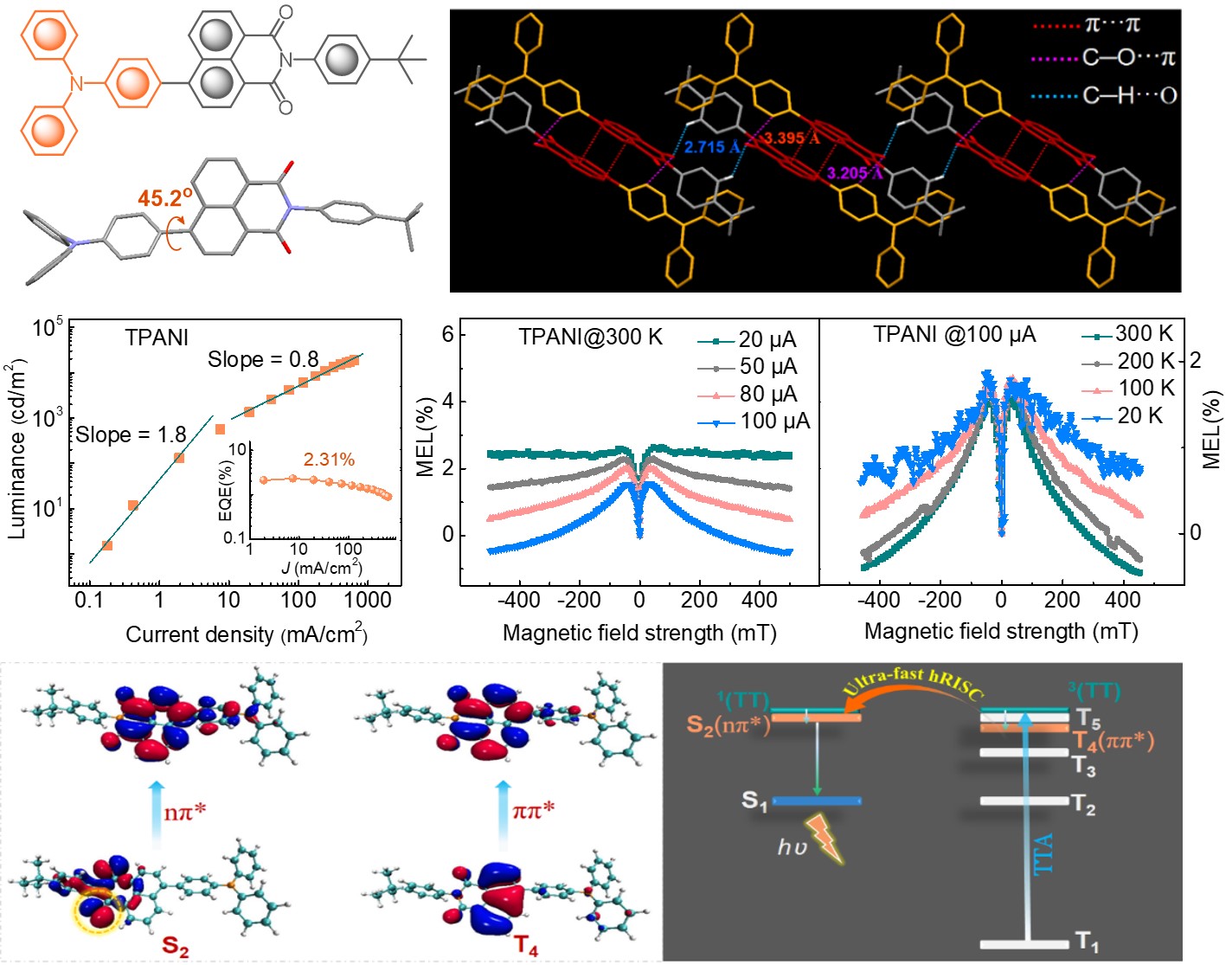High-lying reverse intersystem crossing (hRISC) materials have emerged as a hot research issue in the field of organic light-emitting diodes (OLEDs) because they can convert high-lying triplet excitons (Tn, n ≥ 2) into singlet excitons (Sm, m ≥ 1). In this kind of materials, to trigger a rapid hRISC process, not only an ultra-small energy splitting (ΔESm–Tn) but also a large spin–orbit coupling matrix element (SOCME) between the Tn and Sm states are required. At present, the mainstream strategy to enhance SOCME is to endow Tn and Sm with the properties of local excited state (LE) and charge transfer (CT) excited state, respectively. Yet in essence, both the LE and CT states are ππ* excited states. While according to the El-Sayed’s rule, the hRISC process of 3ππ*→1ππ* is forbidden, and thus it is usually difficult to obtain large SOCME. On the other hand, according to the El-Sayed’s rule, the transition process of ππ*↔nπ* with different spin multiplicities in compounds is allowed because of its “perpendicular orbital jump effect”, which usually possesses a large SOCME. But unfortunately, there is no attempt to construct RISC-OLED materials with nπ* excited state as the spin-flip center. This reason may be that the nπ* excited state usually possesses relatively high energy, and it is difficult to directly populate high-energy excitons that can approach nπ* energy level through electrical injection in OLEDs.

Recently, Professor Zhiyun Lu and her team published relevant research progress on Nature Communications. The research work indicates that if the molecule can be endowed with the capability of triplet-channeled triplet-triplet-annihilation (TTA) (namely T1 + T1 → Tn + S0), the ππ*-featured ‘cold’ T1 excitons generated by electrical injection in OLEDs can be efficiently converted into a high-energy ππ*-featured Tn excitons (the energy can even exceed 4.0 eV). If the compound also has a 1nπ* energy level which is close to Tn state at the same time, the Tn excitons can be effectively converted into a singlet excitons by the ultra-fast hRISC process of 3ππ*→1nπ* (SOCME: ca. 10 cm-1; khRISC: >109 s-1), thus effectively utilizing the ‘cold’ T1 excitons in OLEDs. They used TPANI as an experimental example to verify the above conclusions, and found that the exciton utilization efficiency of the nπ*-assisted TTA-mediated hRISC process can exceed 10% in TPANI-based OLEDs. This research work is expected to deepen researchers' understanding towards the triplet-channeled TTA process and arouse researchers' attentions to the nπ* excited state, and provide a new idea for developing high-performance hRISC-OLED materials.
The work is published on Nature Communications, titled as “Ultra-fast triplet-triplet-annihilation-mediated high-lying reverse intersystem crossing triggered by participation of nπ*-featured excited states”. Sichuan University is the top institute in the address list. Professor Zhiyun Lu in College of Chemistry in Sichuan University, Professor Yu Liu in Changzhou University, Associate Professor Ping Chen in Southwest University and Shi-Jian Su in South China University of Technology are corresponding authors, Assistant Researcher Yanju Luo is the first author. This work is financially supported by the National Natural Science Foundation of China and the Sichuan Science and Technology Project, etc.
Link: https://www.nature.com/articles/s41467-022-34573-2
